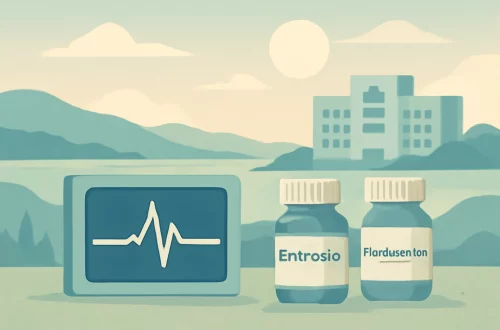
Does Electrolysis Hurt? Understanding the Pain Factor in Hair Removal
Electrolysis has emerged as a popular method for permanent hair removal, appealing to those seeking a long-lasting solution to unwanted hair. As technology advances, the techniques used in electrolysis have evolved, providing individuals with options that can cater to their specific needs and pain tolerances. However, one of the most common concerns surrounding this method is the pain associated with the procedure. While some people report discomfort, others find it manageable or even minimal. Understanding the pain factor in electrolysis involves examining the process itself, the individual’s pain threshold, and the various techniques that can alleviate discomfort.
Pain perception varies significantly from person to person, influenced by factors such as skin sensitivity, hormonal levels, and even psychological state. This variability can make it challenging to paint a definitive picture of what one might experience during electrolysis. In this article, we will delve into the various aspects of pain associated with electrolysis, explore how it compares to other hair removal methods, and provide practical tips for those considering this treatment. By gaining insight into the pain factor, individuals can make informed decisions about their hair removal options and feel more confident as they embark on their electrolysis journey.
Understanding the Electrolysis Process
Electrolysis is a method of hair removal that uses electrical currents to destroy the hair follicle, preventing future hair growth. The process begins with the insertion of a fine probe into the hair follicle, which is then treated with an electrical current. This current destroys the follicle’s ability to produce hair, resulting in permanent hair removal.
The procedure is meticulous and requires trained professionals to ensure safety and effectiveness. Each hair follicle is treated individually, which can make the process time-consuming, especially for larger areas. The sensation experienced during electrolysis often varies depending on the area being treated. For instance, areas with more sensitive skin, such as the bikini line or underarms, may induce more discomfort compared to less sensitive regions.
Different types of electrolysis techniques—galvanic, thermolysis, and blend—can also influence the level of pain experienced. Galvanic electrolysis utilizes a chemical reaction to destroy hair follicles and may cause a tingling sensation. Thermolysis, on the other hand, uses heat to achieve the same result, which some find more uncomfortable due to the warmth generated. The blend method combines both techniques, potentially offering a more balanced approach to pain management while still being effective.
While discomfort is a common aspect of electrolysis, it is essential to note that many individuals find the pain tolerable. The sensation is often described as a quick pinch or stinging feeling, which subsides shortly after the current is applied. As with any cosmetic procedure, understanding the intricacies of the process can help set realistic expectations regarding pain and results.
Individual Pain Threshold and Factors Influencing Discomfort
Pain is subjective, and what may be intolerable for one person might be merely uncomfortable for another. Several factors can influence an individual’s pain threshold during electrolysis. One of the most significant factors is skin sensitivity. People with sensitive skin may experience heightened pain levels, while those with tougher skin might find the procedure more manageable.
Hormonal fluctuations can also play a role in pain perception. For example, menstrual cycles can affect pain sensitivity, often increasing discomfort during certain times. This means that women may experience different pain levels at various points in their cycles, making timing an essential consideration for those undergoing electrolysis.
Additionally, psychological factors such as anxiety and stress can intensify the sensation of pain. A relaxed state can help mitigate discomfort, while tension can lead to heightened sensitivity. Therefore, it is beneficial for individuals to engage in relaxation techniques prior to the appointment, such as deep breathing exercises or meditation.
Moreover, the skill and experience of the technician performing the electrolysis can significantly influence the pain level. An experienced practitioner will be adept at minimizing discomfort through efficient techniques and proper probe insertion. They can also tailor the treatment to accommodate the client’s pain tolerance, making adjustments as necessary throughout the session.
Ultimately, understanding one’s own body and pain tolerance is crucial when considering electrolysis. Open communication with the technician about any concerns or sensitivities can lead to a more comfortable experience.
Comparing Electrolysis to Other Hair Removal Methods
When weighing the options for hair removal, it’s essential to compare electrolysis with other popular methods, such as waxing, shaving, and laser hair removal. Each method has its own pain profile, and understanding these differences can help individuals choose the best option for their needs.
Waxing is another common hair removal technique that involves applying warm wax to the skin and then removing it quickly, pulling the hair out from the root. The pain associated with waxing can be intense for some, particularly in sensitive areas. However, like electrolysis, many people find that the discomfort is brief and manageable.
Shaving is widely considered the least painful hair removal method, but it also requires frequent upkeep and does not offer permanent results. Many individuals experience nicks, cuts, or irritation from shaving, which can lead to longer-term discomfort compared to electrolysis.
Laser hair removal, like electrolysis, is a long-term solution. It employs concentrated light beams to target hair follicles, resulting in hair reduction. The pain associated with laser treatments varies, with some describing it as similar to a rubber band snapping against the skin. While it can be less painful than electrolysis for some, it may not be suitable for all skin and hair types.
Ultimately, the choice between these methods comes down to personal preference, pain tolerance, and desired results. Electrolysis stands out for its permanence and ability to treat all hair colors and skin types, whereas other methods may offer convenience or less discomfort at the cost of long-term efficacy.
Tips for Reducing Discomfort During Electrolysis
For those considering electrolysis but concerned about pain, there are several strategies to help minimize discomfort during the procedure. Preparation and post-treatment care can significantly influence the overall experience, making it more pleasant.
First, consider scheduling your sessions during times when you anticipate being less sensitive. For women, avoiding appointments during their menstrual cycle can lead to a more comfortable experience.
Additionally, discussing pain management options with your technician beforehand is crucial. They may offer topical anesthetics or suggest taking over-the-counter pain relief medication prior to the appointment. These options can help numb the area and mitigate pain during treatment.
Practicing relaxation techniques before and during the session can also be effective. Deep breathing exercises, visualization, or even listening to calming music can help ease anxiety and promote a more relaxed state, which may lower pain sensitivity.
Post-treatment care is equally important. Following the technician’s aftercare instructions can help reduce irritation and discomfort after the session. Applying soothing lotions or cold compresses can alleviate any residual soreness.
Lastly, maintaining a positive mindset can make a significant difference. Focusing on the end goal of permanent hair removal can help distract from the immediate discomfort. Many individuals find that the results of electrolysis far outweigh any temporary pain experienced during the treatment process.
In conclusion, while electrolysis may involve some discomfort, understanding the factors at play can help individuals prepare and manage their experience effectively. By being informed and proactive, one can enjoy the benefits of this effective hair removal method with greater confidence.
**Disclaimer:** This article is not intended to provide medical advice. Always consult with a qualified healthcare professional regarding any health concerns or questions.




